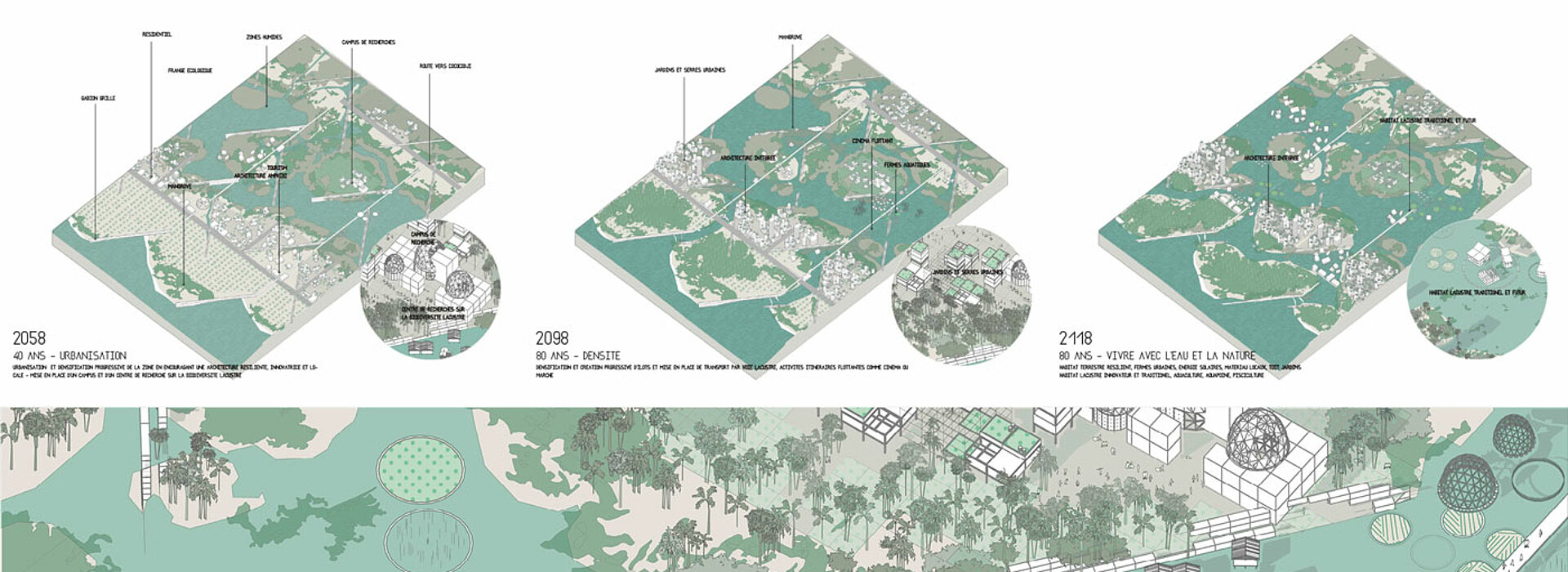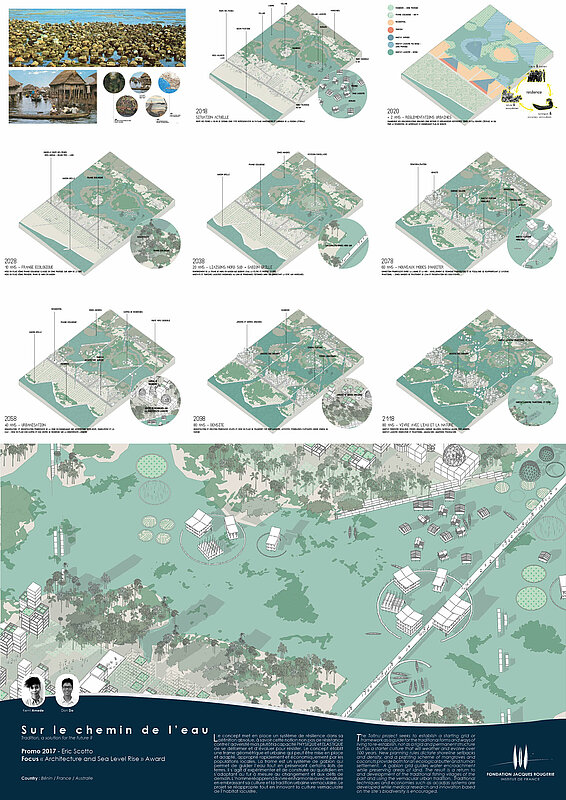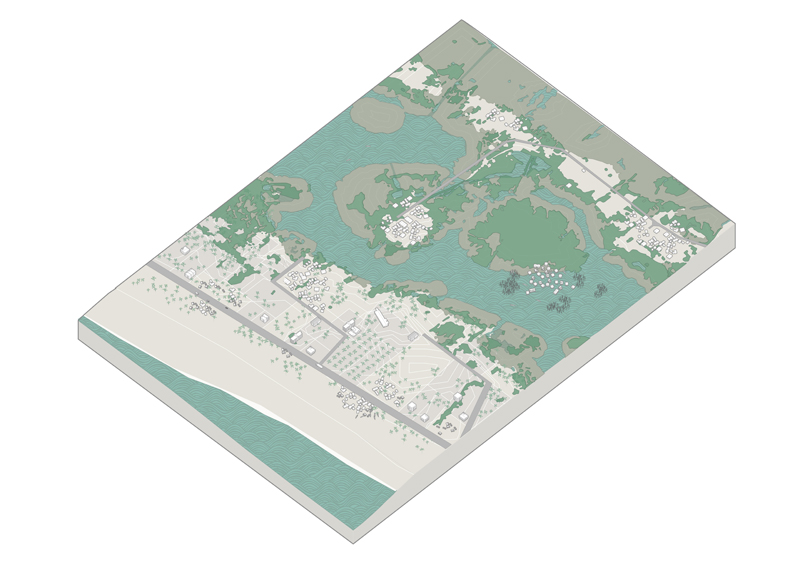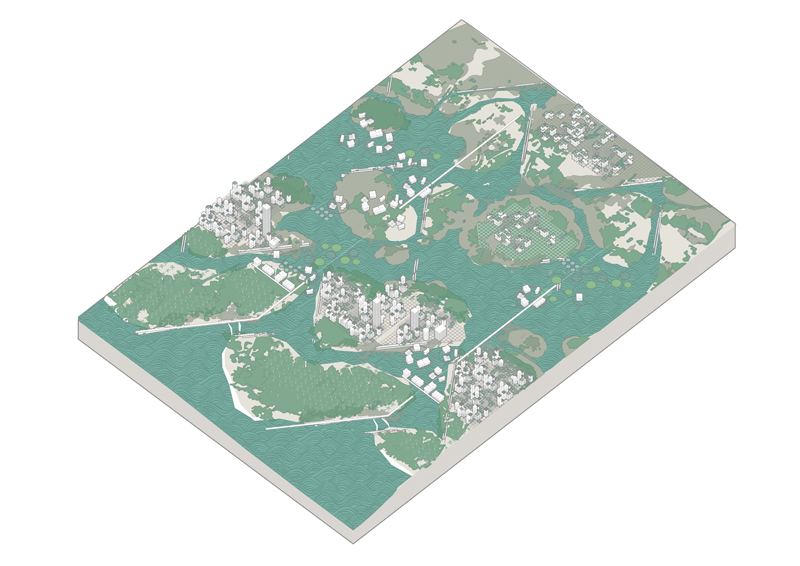Tofinu : Living on the path of the water Living 'on the past of the water' on the Beninese coast
- Year2017
- LocationBenin
South Benin is a tropical wetland area, with bands of swamps, lagoons and land parallel to the coastline.
In the early 19th century, human settlement was organised around traditional fishing villages with stilted houses on the lake. People lived organically in harmony with nature, structured by family, social hierarchy and religion. Generally, the sea was seen as a wilder place, and one would not build permanently near the coast.
In 1850, with the arrival of the French, and the building of the wharf, global trade increased, city gridlines were established and Cotonou became an economic capital. Today, with Cotonou's an increasing population and modernisation comes an appetite for larger plots of land with large concrete villas and a highway planned along the sensitive shoreline, that confl icts directly with the threat of sea level rise.
The Tofi nu project seeks to establish a starting grid or framework as a guide for the traditional forms and ways of living to re-establish, not as a rigid and permanent structure but as a starter culture that will weather and evolve over 100 years.
New planning rules dictate shoreline setbacks and density, and a planting scheme of mangroves and coconuts provide both for an ecological buffer and human settlement. A gabion grid guides water encroachment while preserving areas of land. Hard architecture is not intended nor expected to remain, and can be colonised by sea and mangrove ecosystems.
The result is a return to and development of the traditional fishing villages of the past and using the vernacular urban tradition. Traditional techniques and economies such as acadjas systems are developed while medical research and innovation based on the site's biodiversity is encouraged. Existing ecosystems are protected while the pro are developed while medical research and innovation based on the site's biodiversity is encouraged.
Existing ecosystems are protected while the pro.





